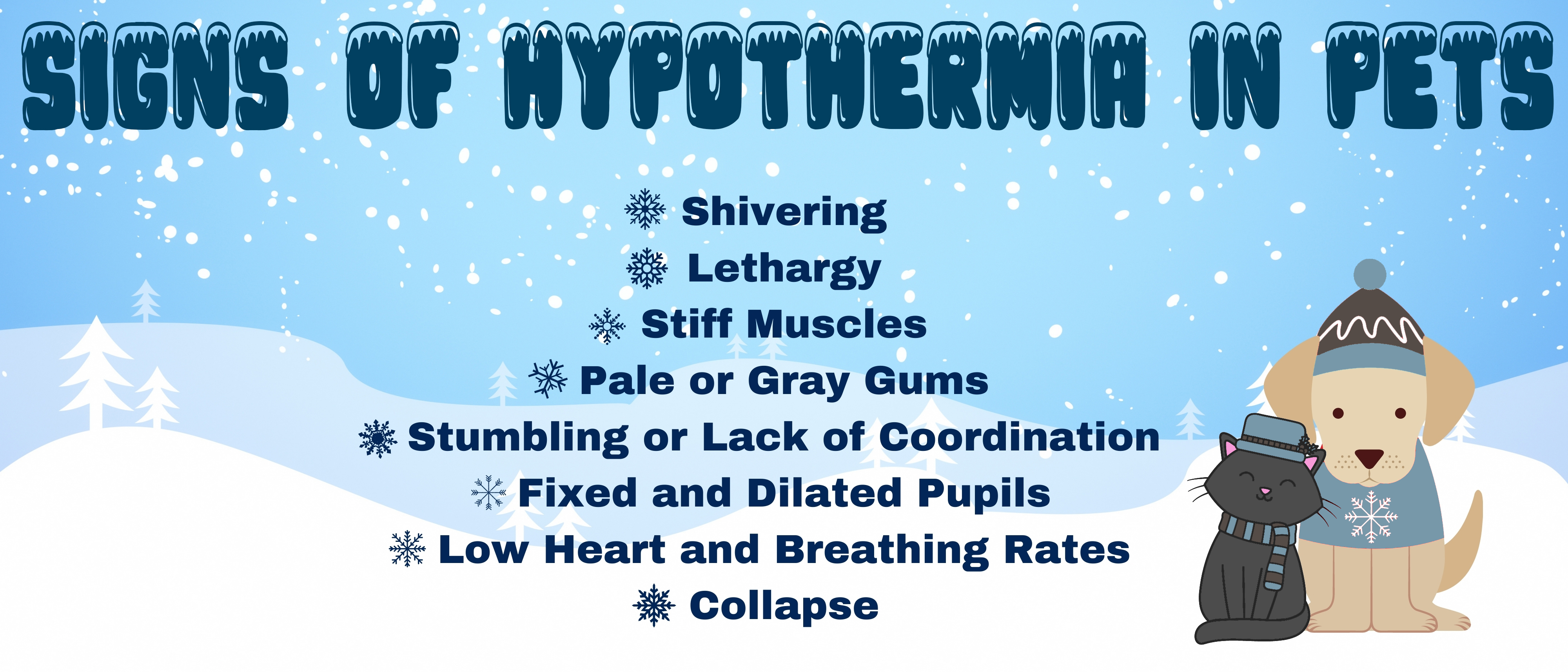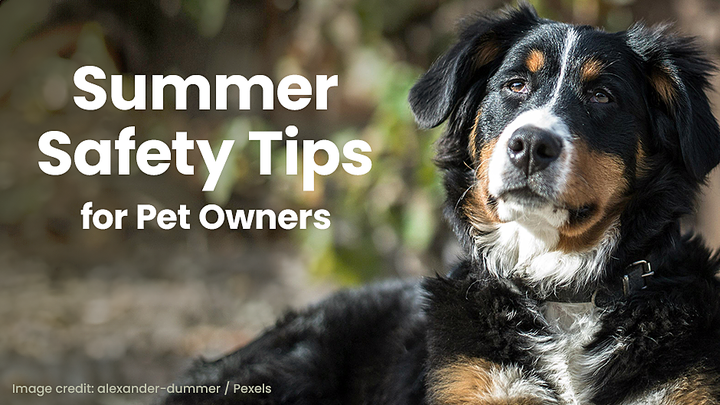In the News
The Pet Owners Ultimate Guide to Winter Safety

Move over Autumn, here comes winter! It is not uncommon for temperatures to plummet into freezing during a Midwest Autumn, so we were not so surprised when snow made an appearance in October (also not surprising seeing as how crazy 2020 has been as a whole!) Whether you are new in town, a new pet owner, or even just looking for solutions to problems you have been running into for years, here is the ultimate cold weather guide to help get your pet through a Minnesota winter!
Winter Wellness: First, make sure your pet has had their yearly wellness exam! Cold weather can exacerbate conditions like arthritis, and it is best to address overall health conditions before the snow and ice set in.
The Limit: Some pets tolerate cold weather better than others. Be aware of factors that contribute to tolerance like the breed, fat stores, activity level, and overall health. For example, a young and healthy Siberian Husky will greatly enjoy a frolic in the snow, and you might even have trouble getting them to come back inside! On the other hand, an elderly short-haired dachshund will have a much shorter tolerance for cold weather based on the fact that their underside might be in contact with the snow, their coat is shorter and less insulated, and their age could contribute to factors like circulation and fat storage. Regardless of these factors, all pets should be given a safe, dry, and warm shelter to escape the elements, and outdoor time should be limited. It is a common misconception that because of fur, dogs and cats are more resilient in cold weather and will not get frostbite or hypothermia, but it’s not true. Pets should never be left outside for long periods in below-freezing temperatures.
Recognize the Signs of Hypothermia:

All About the Paws: Your dog’s paws are resilient and made to withstand a whole host of weather conditions. However, just like hot asphalt can cause burns, cold weather conditions can cause issues as well. Most common paw injuries in cold weather are dry and cracked paw pads, chemical burns from ice salt, and frostbite from overexposure. You can help keep your pet’s paws in tip-top shape by training them to wear booties, avoiding salty paths, using dog-safe moisturizers through the cold months, and keep walks short and jaunty to avoid frostbite. Be sure to check your pet’s feet frequently and wash any unbooted paws after exposure to ice-salt or other deicers. PRO TIP: If your pet has long fur between their toes, it can cause snow build up and can be pretty uncomfortable! Be sure to trim those long hairs to keep ice-balls from forming during walks in the snow!
Fashion Meets Function: Pets in clothes are not just for fashion! Some pets tolerate wearing coats, sweaters, and booties for the sake of being warm while they go outside for their daily stroll. If your pet seems comfortable sporting the latest winter trends, suit them up to make walks and potty breaks more comfortable. If your pet seems anxious or panicked when wearing clothing, you can help get them used to it by wearing their outfit for short periods of time inside (with lots of treats and praise!) and gradually build up the amount of time the clothing is worn. Be sure any coats, sweaters, and booties are dry before outdoor adventures - and remember clothing should always be worn under your direct supervision!
Antifreeze, Rodenticides, Deicers - Oh My! Antifreeze is a very deadly, very sweet-smelling chemical that becomes abundant in the wintertime. Keep antifreeze completely stored away from curious pets. Rodenticides (rat poison) is common in the winter months as rodents look for cozy and warm places (our houses and businesses) to wait out the brutal winter months. If you have a pet, it is best to stay on the safe side and use other methods of rodent elimination to avoid accidental poisoning. Pets can be poisoned by eating the rodenticide directly or killing a rodent that has ingested the poison. Deicers are everywhere (especially in cities!) to keep sidewalks and roads safe for walking. If you must walk your pet through deicer, be sure to wash their feet and bellies immediately after returning home. Prolonged exposure to ice salt can cause chemical burns - so avoid it when possible! If you use deicer materials like salt, consider picking up pet-safe salt.
 Lost Pets: Winter can be a challenging time for pets who become lost. Snow and ice can mask the scents they need to find their way home, and the white landscape can become disorienting for visual clues. Make sure your pets’ microchip and tags are up to date, just in case!
Lost Pets: Winter can be a challenging time for pets who become lost. Snow and ice can mask the scents they need to find their way home, and the white landscape can become disorienting for visual clues. Make sure your pets’ microchip and tags are up to date, just in case!
Seeking Warmth: Space heaters, fireplaces, cozy candles, and electric blankets are all things that your pet might seek out to find a little extra warmth and can all be fire starters, so they should always be monitored when in use. Some pets will get dangerously close to these heat sources, so be sure to add a barrier or train your pet to keep a safe distance from space heaters and fireplaces. Candles are especially hypnotizing to curious cats - so keep candles out of reach from all your pets and in a place they cannot be accidentally knocked over. Electric blankets are an easy way to keep your pet toasty warm. Exposed cords can be chewed, and surprisingly hot temperatures can be achieved with electric blankets. Pet safe electric blankets are best but be sure to keep temperatures low to avoid burns.
Be Prepared: In Minnesota, we are accustomed to severe winter weather. In any case, prepare an emergency kit for your pet and plans for what to do should we experience a disaster due to winter weather. Be sure you have enough food, water, and medications on hand for at least 5 days.
Feral Cats in the Winter: Outdoor cats (and other critters) see a warm vehicle engine as a comfortable and safe place to ride out the bitter cold, but it can cost them their life. Be sure to give your hood a few good taps and a honk or two of the car horn to evict any engine squatters before starting your car. This will let them know that it is time to evacuate the car before it is too late. If you are interested in providing a snug and warm spot for feral felines to escape the bitter cold, consider constructing a cat shelter. Hay, wood chips, old blankets and towels, and even reused materials like packing peanuts and Styrofoam can help insulate boxes for feral cats to take shelter in. Just be sure to occasionally check the shelter to make sure the bedding is dry as wet bedding can lead to freezing and death.
If you have any questions about preparing your pet for the long winter ahead, be sure to give us a call today to set up your next appointment!





